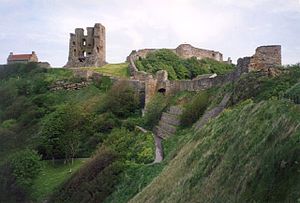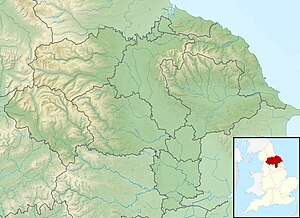
Sir John Boys is best known as the Royalist Governor of Donnington Castle in Berkshire during the English Civil War.

The First English Civil War took place in England and Wales from 1642 to 1646. It is part of the 1639 to 1653 Wars of the Three Kingdoms, which also include the Bishops' Wars, the Irish Confederate Wars, the Second English Civil War, the Anglo-Scottish war (1650–1652) and the Cromwellian conquest of Ireland. Historians calculate some 15% to 20% of all adult males in England and Wales served in the military between 1639 and 1653, while around 4% of the total population died from war-related causes, versus 2.23% for World War I. These figures illustrate the impact of the conflict on society in general, and the bitterness it engendered.

Henry Hastings, 1st Baron Loughborough, 28 September 1610 to 10 January 1667, was the younger son of Henry Hastings, 5th Earl of Huntingdon, one of the most powerful landowners in Leicestershire. He fought with the Royalist army in the Wars of the Three Kingdoms, and narrowly escaped execution after being captured at Colchester in 1648. He spent the next twelve years with the Stuart court in exile, and became a leading member of the Sealed Knot, a body set up to co-ordinate Royalist plots against The Protectorate. Hastings returned home after the 1660 Stuart Restoration, and was appointed Lord Lieutenant of Leicestershire in 1661, a position he retained until his death in January 1667.

Sir Edward Rossiter was an English landowner, soldier and politician from Lincolnshire. He fought with the Parliamentarian army in the Wars of the Three Kingdoms and sat as an MP at various times between 1646 and 1660.

Sir William Batten was an English naval officer and administrator from Somerset, who began his career as a merchant seaman, served as second-in-command of the Parliamentarian navy during the First English Civil War, then defected to the Royalists when the Second English Civil War began in 1648. After the 1660 Stuart Restoration, he was elected Member of Parliament for Rochester and re-appointed Surveyor of the Navy, a position he had previously held from 1638 to 1648. In this capacity, he was a colleague of the author Samuel Pepys, who mentions him frequently in his "Diary", often to his detriment.

The first Siege of Hull marked a major escalation in the conflict between King Charles I and Parliament during the build-up to the First English Civil War. Charles sought to secure the large arsenal held in Kingston upon Hull, East Riding of Yorkshire. He first approached the town in late April 1642 and was rebuffed by the town's Parliamentarian governor, Sir John Hotham. Charles retreated to York but in July he received news that Hotham might be willing to hand over the town if the Royalists approached with force large enough for Hotham to surrender with his honour intact.

The siege of York in 1644 was a prolonged contest for York during the First English Civil War, between the Scottish Covenanter army and the Parliamentarian armies of the Northern Association and Eastern Association, and the Royalist Army under the Marquess of Newcastle. It lasted from 22 April until 1 July when the city was relieved by Prince Rupert of the Rhine. Rupert and Newcastle were defeated the next day at the decisive Battle of Marston Moor, and the siege resumed until the city was surrendered on easy terms on 16 July.
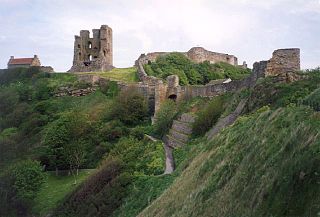
Scarborough Castle is a former medieval Royal fortress situated on a rocky promontory overlooking the North Sea and Scarborough, North Yorkshire, England. The site of the castle, encompassing the Iron Age settlement, Roman signal station, an Anglo-Scandinavian settlement and chapel, the 12th-century enclosure castle and 18th-century battery, is a scheduled monument of national importance.

Major General Rowland Laugharne was a member of the Welsh gentry, and a prominent soldier during the Wars of the Three Kingdoms, in which he fought on both sides.
Sir Hugh Cholmeley, 1st Baronet was an English landowner and Member of Parliament who sat in the House of Commons at various times between 1624 and 1643. He was initially a Parliamentarian but later a Royalist leader during the English Civil War. His name is sometimes spelt Cholmley.
Thomas Rawton was one of the highest-ranking officers to support the Levellers, and served with Parliament on both land and sea. He was the eldest son of Captain John Rawton, a naval officer who made his fortune in the Baltic trade, and inherited his father's property in the London Borough of Southwark.

The Battle of Weymouth and the associated Crabchurch Conspiracy occurred in 1645, during the First English Civil War, when several royalist plotters within the twin towns of Weymouth and Melcombe on the Dorset coast conspired to deliver the ports back into the control of King Charles I.

The Storming of Bristol took place from 23 to 26 July 1643, during the First English Civil War. The Royalist army under Prince Rupert captured the important port of Bristol from its weakened Parliamentarian garrison. The city remained under Royalist control until the second siege of Bristol in September 1645.
Sixteen forty-six was the fifth and final year of the First English Civil War. By the beginning of 1646 military victory for the Parliamentary forces was in sight. A Royalist army was defeated in the field at the Battle of Torrington on 16 February and the last Royalist field army was defeated at the Battle of Stow-on-the-Wold on 21 March. From then on the New Model Army cleared the remaining Royalist strongholds. The politics moved into a post-war phase with all the major factions in England and Scotland trying to reach an accommodation with King Charles I that would further their own particular interests.
Sir John Hotham the younger, known as Captain Hotham, was an English member of parliament and military commander who fought for the Parliamentarians during the First English Civil War. He was executed for treason in 1645.
The siege of Portsmouth was the siege of a Royalist garrison in Portsmouth by a Parliamentarian force conducted in the early part of the First English Civil War. The siege resulted in Portsmouth falling to Parliament after a little under a month of conflict.
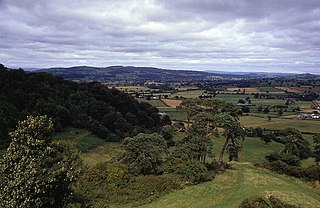
The Battle of Montgomery took place during the First English Civil War of 1642–1646. On 17 September 1644, a Parliamentarian force commanded by Sir John Meldrum advanced to engage a Royalist army led by Lord Byron which was besieging Montgomery Castle in mid Wales. The battle was fought the next day. After the Royalists gained an initial advantage, the Parliamentarians counter-attacked and destroyed Byron's army.
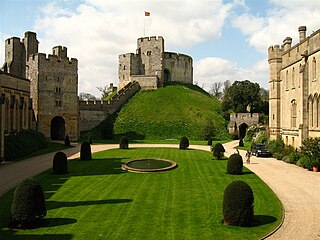
The Siege of Arundel took place during the First English Civil War, from 19 December 1643 to 6 January 1644, when a Royalist garrison surrendered to a Parliamentarian army under Sir William Waller.

The Siege of Bridgwater took place in July 1645, during the First English Civil War, when a Royalist garrison surrendered to a Parliamentarian force under Sir Thomas Fairfax.
Helmsley Castle was a Royalist stronghold in North Yorkshire during the First English Civil War. It was besieged by Parliamentarian forces in August 1644 and surrendered on 22 November after a siege of two to three months.
